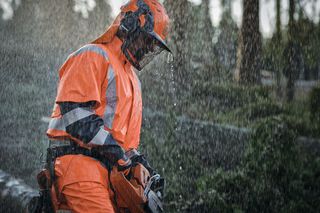Understanding the impact of our products
At Husqvarna, we have defined a sustainability strategy. One important target of this strategy is to reduce our carbon emissions along the value chain.
We assess the environmental impact of our products by conducting life cycle assessments (LCAs). By providing environmental information about our products, we aim to help our customers better understand the environmental impact of Husqvarna products. We do this to empower our customers to make informed decisions.
At Husqvarna, we have defined a sustainability strategy. One important target of this strategy is to reduce our carbon emissions along the value chain.
We assess the environmental impact of our products by conducting life cycle assessments (LCAs). By providing environmental information about our products, we aim to help our customers better understand the environmental impact of Husqvarna products. We do this to empower our customers to make informed decisions.













